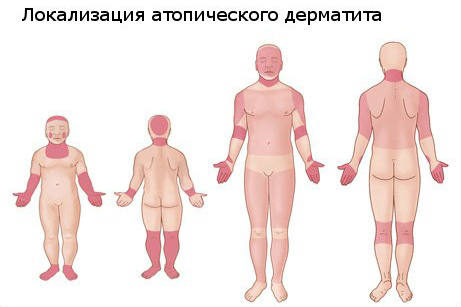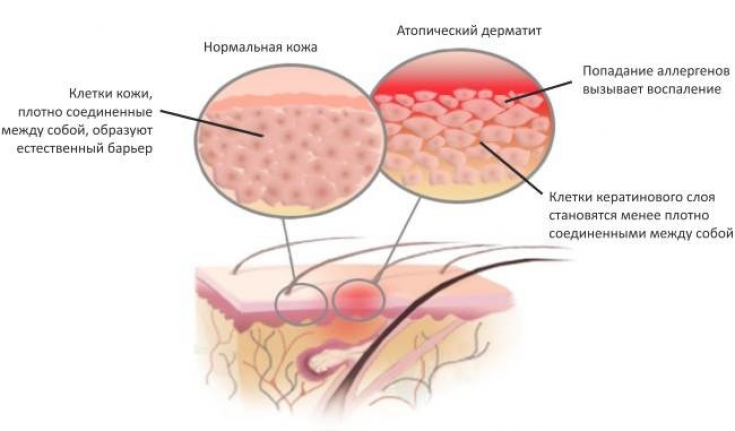Allergic diseases — this, one might say, "scourge" modern society. Recent studies indicate that more than 10% of the world's population suffers from atopic dermatitis.
This pathology refers to inflammatory skin lesions, and is most often manifested by redness, itching and burning. This disease occurs in childhood, and therefore much attention is paid to its prevention and treatment.
Since the causes of atopic dermatitis are not fully known, the treatment of this disease — it is always a long and complicated process, read more about it on estet-portal.com in this article.
Atopic dermatitis: causes of the disease and characteristic clinical picture
In the acute stage of atopic dermatitis, erythema occurs, against the background of which superficial changes (edema, vesicles and weeping) subsequently develop. In the chronic stage of the lesion, lichenification of the skin is noted. Atopic dermatitis occurs against the background of dry skin and is accompanied by severe itching.
About 50% of people suffering from atopic dermatitis are also prone to hay fever.
Although atopic dermatitis can affect any part of the body, infants often develop eczematous lesions on the cheeks and neck. Typical localization of lesions for this disease — these are popliteal and ulnar fossae, inguinal region, face and neck folds.
Read the latest articles on Facebook!
Basic hypotheses for the occurrence of atopic dermatitis
Two main hypotheses have been proposed to explain the inflammatory lesions in atopic dermatitis. The first relates to an imbalance in the adaptive function of the immune system, and the second is based on a violation of the integrity of the skin barrier. These two hypotheses are not considered mutually exclusive, and may complement each other.
The immunological imbalance theory states that atopic dermatitis is the result of an imbalance at the level of T cells, especially T helper cells. This leads to an increase in the production of interleukins, resulting in an increase in the level of IgE.

The theory of skin barrier disruption is based on the fact that people with atopic dermatitis have a mutation in the genes of the protein filaggrin, which ensures the interconnection of keratinocytes. In atopic dermatitis, the integrity of the skin barrier is broken, there is an increased loss of moisture, the skin becomes drier and more pliable for the penetration of allergens.
Basic approaches to the treatment of atopic dermatitis
Atopic dermatitis — it is a chronic disease, and therefore its treatment is aimed at:
• reducing the duration and severity of exacerbations.
In order to prevent flare-ups, it is important to use moisturizers that keep the skin hydrated, reduce itching, and speed up healing.
It is important that the patient use emollients without perfume or other potential allergens, as these can provoke secondary allergic sensitization.
Corticosteroids are used to treat moderate to severe atopic dermatitis in both children and adults. These drugs are selected individually depending on the severity of the clinical picture, the location and area of the lesion.
The main aspects of the treatment of atopic dermatitis in children atopic dermatitis, calcineurin inhibitors are currently used. These drugs have fewer side effects than corticosteroids, allowing them to be used for a longer period of time.
UV therapy has a good effect in the treatment of atopic dermatitis, which, however, should be prescribed in a small course to avoid unwanted side effects.Comprehensive and timely treatment of atopic dermatitis allows the patient to quickly return to normal life.










Add a comment